Reviews
Godzilla 2000: Millennium / Gojira Nisen: Mireniamu
Takao Okawara
Japan, 1999
Credits
Review by Rumsey Taylor
Posted on 23 February 2013
Source Hulu
Categories The Compleat Godzilla
Godzilla 2000 - the third and, to-date, final reboot of Toho’s 50-year-old kaiju franchise - inhabits a pitiable position in the Godzilla canon. For one, it is the first Toho-produced film to follow Roland Emmerich’s much maligned, albeit very successful American remake in 1998, from which its differences are explicitly obvious. Paramount among them is how it renders the title monster, as it always has, as an actor in costume shot with composite photography. Whereas Emmerich’s Godzilla, modeled more realistically after an iguana with a stooped-over gait, accelerated every aspect of the beast’s mobility, the monster in Godzilla 2000 is restrained to a more comfortable pace, intent not to chase the denizens of some urban location with the appetite of a velociraptor, but to pursue them slowly and with inevitable resolve to demolish them and their surroundings.
This cinematographic tactic is entirely forgivable, as I consider Toho’s conception of Godzilla, which remains largely unrevised in the fifty years since his original incarnation, as pure and integral an icon as cinema has produced. Godzilla must be slow and immobile (despite the length of his forearms, he wields them with about the same effectiveness as a Tyrannosaur does his) by the same measure that a vampire must have fangs. But despite its respect to the inherent Godzilla tradition, Godzilla 2000 has the responsibility of supplanting the Heisei series, which delivered some of the most robust and inventive entries in the franchise. The result is that at this point the franchise begins to feel dated and hackneyed to even its most devoted acolytes. In lieu of another round of big attacks is a theme park ride that distills the same experience into something more accessible and transient and deceptively new.
This is pronounced in the “2000” that constitutes half of this film’s appellation, in a fashion it repeats from Godzilla 1985—the American version of Toho’s 1984 Heisei christener. The intent is to immediately pronounce Godzilla’s contemporaneousness, for essentially every other aspect of the film, as well as every other in the franchise, is a reiterative demonstration of a practice established fifty years prior and repurposed with minimal modification for new audiences. Godzilla films change only in name and nemesis, but the destruction remains the same, even if the fear they evoke has become so diluted by reiteration that their utility as metaphor is consequentally undermined.
Regardless, the central metaphor of a Godzilla film is at this point a dated narrative conceit, so the possibility of each Godzilla film to have employed it with the same sensitivity as the original would diminish in time. In the original Godzilla, the title monster is perceived as a consequence of the atom bomb, and in turn an anthropomorphized manifestation of its potency and threat. But this isn’t precisely the case in Godzilla 2000, in which Godzilla is more a mystical beast humans observe with respect and reverence; they fear his destruction, but instead of targeting his demise they instead study him, and resolve to direct him back into the ocean each time he makes landfall.
The film opens with another of Godzilla’s attacks, which invites the attention of two parties: the Godzilla Prediction Network (GPN), constituted by an adventurous scientist, his daughter, and a photographer, and the Japan Self Defense Forces, who ready themselves in Godzilla’s path with a considerable array of weaponry. This all seems to be a routine response to the monster’s appearances, so the opening of Godzilla 2000 - which has a specious connection with only the original 1954 film - depicts the routine of a world in which Godzilla exists and must be tended to in customary fashion.
This routine is interrupted by the discovery of a sixty million year-old UFO at the bottom of the ocean, which is encrusted in igneous rock and becomes autonomous once it is lifted to the surface. It immediately pursues Godzilla with an unforeseeable hostility, and in its initial sparring with him proves itself a respectable, if abstract nemesis. In between these bouts the UFO torments the GPN who have spent years evaluating Godzilla. It parks itself atop one their headquarters and invisibly extracts their research from their computers. In its next meeting with Godzilla it will not only prove itself more knowledgeable of its nemesis, but also more organically analogous; in addition to its capability in gleaning digitized data, it possesses an ability to mimic Godzilla’s biological form, and ultimately transforms into a monstrous surrogate.
This ultimate form is deemed Orga (although I recall this name being uttered only in the closing credits), who has virtually all of Godzilla’s strengths even if its physical resemblance is moot. In lieu of its foe’s weak forearms it has elongated, apelike arms that dangle all the way to the ground, and - absent a tail - it can jump majestically. Even Godzilla, straining to keep Orga in sight when he jumps clean over his head, hesitates his attack in respect to the beast’s unexpected and impressive mobility. The two duke it out with much elaboration, and at this point Godzilla 2000’s merit is ably demonstrated. Gone is the narrative conceit of subduing Godzilla or how to minimize his destruction of Tokyo; in its place a kaiju battle as elongated, colorful, and bombastic as any the series has to offer.
The film ends with a curious and perhaps laughable dialogical exchange, between three members of the GPN. They are standing at the top of one of Tokyo’s nearly-demolished skyscrapers, with a newly victorious Godzilla occupying their view of the burning horizon. Here they explicitly announce Godzilla’s humanity, and as such their inherent sympathy for his plight:
We scientists produced this monster, Godzilla. And ever since, we’ve tried to destroy him.
Then why—why does he keep protecting us?
Maybe because… Godzilla is inside each one of us.
More The Compleat Godzilla
-
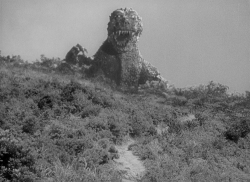
Godzilla
1954 -
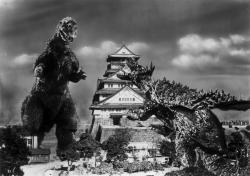
Godzilla Raids Again
1955 -
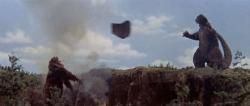
King Kong vs. Godzilla
1962 -
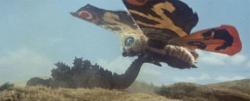
Mothra vs. Godzilla
1964 -
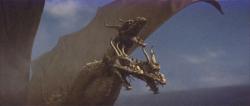
Ghidorah, the Three-Headed Monster
1964 -
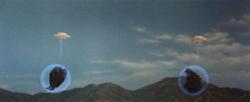
Invasion of Astro-Monster
1965 -

Ebirah, Horror of the Deep
1966 -
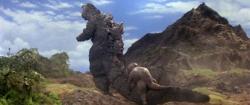
Son of Godzilla
1967 -
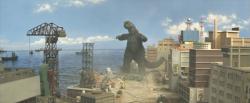
Destroy All Monsters!
1968 -
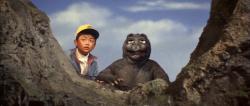
All Monsters Attack
1969 -
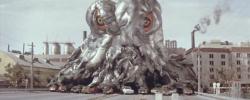
Godzilla Vs. Hedorah
1971 -
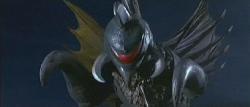
Godzilla vs. Gigan
1972 -
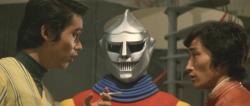
Godzilla vs. Megalon
1973 -
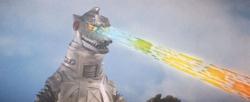
Godzilla vs. Mechagodzilla
1974 -
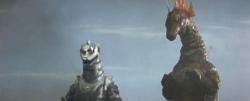
Terror of Mechagodzilla
1975 -
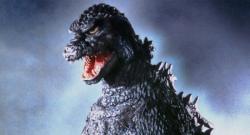
The Return of Godzilla
1984 -
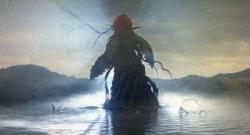
Godzilla vs. Biollante
1989 -
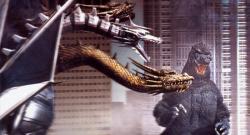
Godzilla vs. King Ghidorah
1991 -
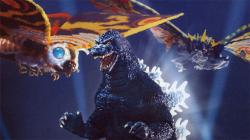
Godzilla vs. Mothra
1992 -
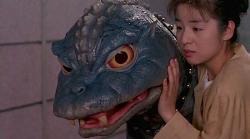
Godzilla vs. Mechagodzilla
1993 -
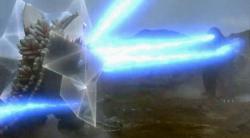
Godzilla vs. SpaceGodzilla
1994 -
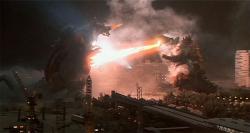
Godzilla vs. Destoroyah
1995 -
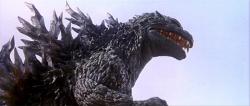
Godzilla 2000
1999 -
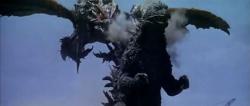
Godzilla vs. Megaguirus
2000 -
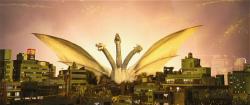
Godzilla, Mothra and King Ghidorah: Giant Monsters All-Out Attack
2001 -
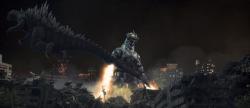
Godzilla Against Mechagodzilla
2002 -
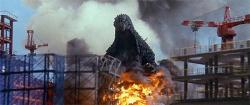
Godzilla: Tokyo S.O.S.
2003 -
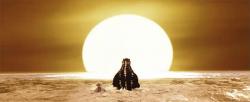
Godzilla: Final Wars
2004
We don’t do comments anymore, but you may contact us here or find us on Twitter or Facebook.



